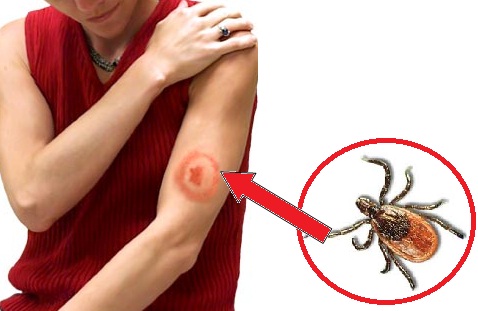Joint pain lyme disease is a bacterial infection which is spread by a tick. This disease was first diagnosed in 1975 in Lyme Conn., and two nearby towns during heightened season of tick in the area.
What is joint pain lyme disease?
Joint pain lyme disease or simply known as lyme disease is characterized with joint pain or juvenile rheumatoid arthritis. The first symptom of lyme disease is a skin rash then followed by joint pain symptoms. Patients recall that these symptoms appear after they were bitten by a tick.
The main cause of lyme disease is tiny deer ticks which are infected by a spiral shaped bacterium. The bacterium associated with lyme disease is known as Borrelia burgdoferi.
The increased rate of deer population is one of the reasons why there are an increase number of patients suffering from joint pain lyme disease. In United states, Mid-Atlantic States, northern California, Minnesota and Wisconsin have recorded cases of lyme disease. Other parts of Europe, South America and Asia have also reported cases of the disease.
Lyme disease needs antibiotics to treat the bacteria at an early stage. If it is not treated properly, it may result to recurring attacks of lyme disease. The joint pain associated with lyme disease may develop recurrent attacks months or years after it first manifested. The swelling of the joint pain may last for a couple of days to several months. The joint pain may also spread from one joint to another but the most commonly affected are the knees.
Though there is a risk that a person may also have gout aside from the lyme disease itself. That is why series of tests are also given to patients to rule out that the lyme disease is the culprit of joint pain and not gout.
Most those patients who suffer joint pain lyme disease may also develop full blown symptoms of arthritis later on.
What are the Causes of Joint Pain Lyme Disease?
The joint pain lyme disease is spread by deer ticks which are described as brown and about the size of head of a pin. The ticks will attach to the person and suck the blood host until it develops into a swollen bump making the host infected with bacteria.
To develop lyme disease, a person must be bitten by an infected deer tick. It normally takes forty eight hours before the bacteria can transmit infection into bloodstream. It is recommended that you immediately removed any tick in your skin to prevent possible infection.
What are the Symptoms of Joint Pain Lyme Disease?
The symptoms of lyme disease vary from patient to another. The location of the affected joint pain as well as the severity of the symptoms may also differ from the first attack to recurring incidents later on.
Some of the symptoms of joint pain lyme disease are:
- Rash is characterized as small and red bump which is normally found where the tick had bitten. It may appear tender as the redness of the rash expands. It often looks similar to a bull’s eye, with a red ring that surrounds the area and small bump in the center.
- Patient may have chills, fever and headache
- Joint pain associated with lyme disease develops if the bite was not treated properly. The joint pain which is accompanied by swelling may be observed to one or couple of joints. The common affected are the joints.
- Other symptoms of lyme disease are swollen lymph nodes, stiff neck and dizziness.
What are Tests and Diagnosis for Joint Pain Lyme Disease?
Joint pain lyme disease may show some symptoms that mimic other types of ailments like arthritis that is why other tests are given to diagnose joint pain lyme disease.
The two types of tests done may include:
- ELISA test is the most common test asked by physician to detect the lyme disease. Though the result of this test may not be accurate at times.
- Western blot test is a type of test given to detect the bacteria which causes the lyme disease.
What are the Treatments of Joint Pain Lyme Disease?
1. Oral antibiotics
 Oral antibiotics are the first defense against Lyme disease. Antibiotics are needed to get rid of the infection and to prevent further infection.
Oral antibiotics are the first defense against Lyme disease. Antibiotics are needed to get rid of the infection and to prevent further infection.
Â
           2. Intravenous antibiotics
 The intravenous antibiotics are usually given to patients whom the disease had progressed. This is usually administered 2 to 3 weeks to the patient to totally eliminate the bacteria.
The intravenous antibiotics are usually given to patients whom the disease had progressed. This is usually administered 2 to 3 weeks to the patient to totally eliminate the bacteria.
3. Use insect repellant
 Insect repellant are needed to prevent the presence of ticks from sticking to your skin. If you already had lyme disease before, you may get it again so use insect repellant that contains DEET to avoid tick bites again.
Insect repellant are needed to prevent the presence of ticks from sticking to your skin. If you already had lyme disease before, you may get it again so use insect repellant that contains DEET to avoid tick bites again.
Joint pain lyme disease may have recurring episodes and the severity of the attacks may vary. Ask for your health care provider if the recurring joint pain is still associated with lyme disease to rule out other chronic condition.
